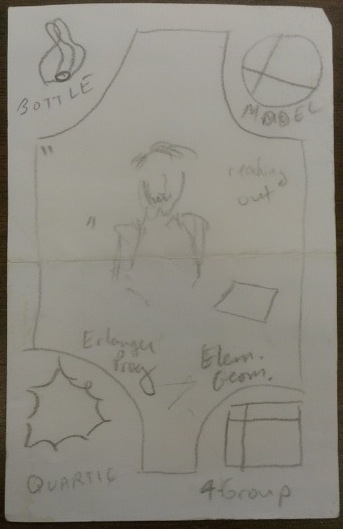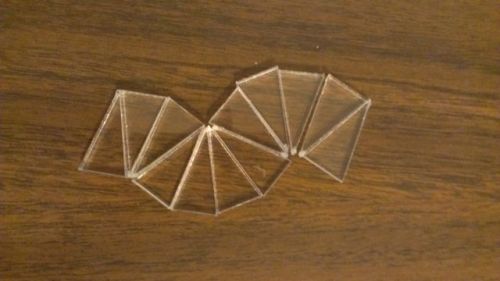 William Thurston passed away yesterday. I’m feeling really torn up about this, and I thought that writing about it might help. William Thurston has been a hero and inspiration of mine for a number of years now. I’ve often daydreamed of getting to study with him, or even just getting to hear him speak. And now that will never happen.
William Thurston passed away yesterday. I’m feeling really torn up about this, and I thought that writing about it might help. William Thurston has been a hero and inspiration of mine for a number of years now. I’ve often daydreamed of getting to study with him, or even just getting to hear him speak. And now that will never happen.
In my head, he’s “Thurston”—I would get excited about “reading some Thurston” or running across some new way that he was involved in mathematics that I’m interested in. And maybe he’ll feel like “Thurston” again to me someday. But right now—even though I don’t have any right to speak of him familiarly—I can’t help but want to call him Bill. I know intellectually that the feeling of closeness is illusory, but I can’t help myself.
I came to know Bill’s work through my ongoing interest in non-Euclidean geometry. It’s an amazing subject, full of beautiful objects, ideas, and theorems. It connects with compelling questions of philosophy and psychology, and its historical arc is an epic human story. And maybe most of all, it feels like a world unto itself, one that I’ve inhabited for a while and feel kind of at home in.
Bill’s ways of thinking about three-dimensional manifolds revolutionized their study. I’m a rank amateur when it comes to this stuff, but I’ve applied myself to it the best that I can. Reading and re-reading parts of his The Geometry and Topology of Three-Manifolds—first the lecture notes, and then in book form—has been an ongoing love affair. Reading papers that referenced Bill’s work made me feel like I was circling around something important, something central. It’s just the most beautiful and compelling and exciting stuff–at once dizzying and serene.
And then one day I saw “Bill Thurston” pop up in a thread on MathOverflow, and I was just floored. Could that be the William Thurston? It was. And there he was, just mingling and sharing, probing and wondering. I quickly came to relish the thoughts he would share on the site. Here’s his profile page, which contains links to his MathOverflow contributions. It includes the following text:
Mathematics is a process of staring hard enough with enough perseverance at the fog of muddle and confusion to eventually break through to improved clarity. I’m happy when I can admit, at least to myself, that my thinking is muddled, and I try to overcome the embarassment that I might reveal ignorance or confusion. Over the years, this has helped me develop clarity in some things, but I remain muddled in many others. I enjoy questions that seem honest, even when they admit or reveal confusion, in preference to questions that appear designed to project sophistication.
That is not the tone that is associated with mathematicians. I remember reading the above and feeling so struck and moved—that here was this utterly brilliant person, a living legend, who was expressing forthrightly feelings of confusion—trying to negotiate his own mind and social dynamics and, simply, living. It felt like a revelation. Here’s another of his wonderful contributions to the site.
So often the world of mathematics—the content, the texts, the institutions, the social dynamics—can seem so daunting. Isolating. An enormous edifice. It’s easy to feel small and insignificant.
Here’s an entirely different feeling: the excitement and energy and most of all integrity of living in a world where your heroes are alive. Integrity in the sense that the world feels whole, like something that fits together and whose parts are in harmony. And that you just might have a place in it.
And now the world feels a little diminished to me.
I remember feeling similarly to this when Kurt Vonnegut died. Reading Vonnegut’s novels has been a thread in my life since high school. There are just these moments when I feel an urge toward his humor and outlandishness and compassion and moral depth. I admire and enjoy his work, and his turn of mind often thrills me. I always thought it would be cool to meet him. And then he passed away.
But I never wanted to be Kurt Vonnegut, or even be like him. There were some ways that I felt kind of like him, and that’s why what he wrote resonated with me. And even: reading what he wrote helped to shape who I am.
But I never wanted to see through Vonnegut’s eyes.
With Bill, though, I always really wanted to see the way that he saw. I wanted and want to be able to see and see into geometric structures the way he did—in a way that feels intimate and intuitive. And I wanted and want to see mathematics as a vibrant, interconnected, human pursuit in a way that I feel he had special insight into.
A few months ago I ran across this video of a lecture Bill gave at the Clay Research Conference in 2010. The introduction Bill is given is a great overview of his contributions to mathematics, and the way that Bill talks is marvelous to listen to. But I bring it up most of all to say—just look at the way he moves. There’s something in it that’s just breathtakingly amazing.
Bill both represented something to me and at the same time was the incarnation of the thing he represented. That’s a little poetic and high-falutin, but it’s the best way that I can say it. Bill shaped my idea of what a mathematician and a person can be, and then also satisfied and realized that idea in the concrete. He was at once the “great man” who I admired and a person who made efforts to share himself with other people—including me, in a very small way, without his knowing—so simply and so humbly.
Bill, I only knew you from afar, but I still feel close to you. Your book sits in a special place on my shelf, and your work holds a special place in my heart. You told me things that blew my mind—on the page, yes, but it was like you were talking to me and only me. That first time I really saw what it would be like to live inside of a 3-sphere, it was electric. And in my eyes, at least, you moved through this world with grace and humility and curiosity and unmixed genuineness. I’ll never be able to tell you so in this life, but I’ll say it here anyway:
Thank you, Bill. You are my hero.
Post-script: If you’re interested in reading some of Bill Thurston’s writings, this blog post at Secret Blogging Seminar has a list that’s a great jumping-off point.
Also, here is the celebration of Bill’s life put together by Cornell’s math department, where Bill taught.












